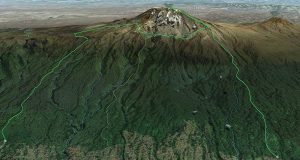Exploring the Rich Biodiversity of Kilimanjaro National Park
Diverse Ecosystems of Kilimanjaro National Park
Kilimanjaro National Park, located in Tanzania, is home to one of the most iconic and majestic natural wonders in Africa – Mount Kilimanjaro. This UNESCO World Heritage Site boasts a diverse range of ecosystems, from lush rainforests to alpine meadows, making it a haven for a wide variety of plant and animal species.
The park is divided into several distinct ecological zones, each with its own unique flora and fauna. The lower slopes of the mountain are covered in dense rainforests, which are home to a rich array of plant life, including giant heathers, ferns, and orchids. As you ascend higher, the landscape transitions to moorland, characterized by grasslands dotted with lobelias and senecios.
Above the moorland lies the alpine desert zone, where only the hardiest plants can survive in the harsh conditions. Despite the barren appearance of this zone, it is home to a number of unique plant species adapted to the extreme temperatures and low oxygen levels. Finally, the summit of Mount Kilimanjaro is a snow-capped peak, where only a few species of lichens and mosses can survive.
Flora and Fauna in the Highest Peak in Africa
The diverse ecosystems of Kilimanjaro National Park support a rich variety of wildlife, including elephants, buffalo, leopards, and monkeys. The park is also home to over 140 species of birds, making it a paradise for birdwatchers. Among the most famous inhabitants of the park are the elusive colobus monkeys, which can be spotted swinging through the trees in the rainforest zones.
In addition to its impressive array of animals, Kilimanjaro National Park is also known for its stunning plant life. The park is home to over 1,000 species of plants, many of which are found nowhere else on earth. One of the most iconic plants in the park is the giant groundsels, which can grow up to 20 feet tall and are a common sight in the alpine desert zone.
To truly appreciate the biodiversity of Kilimanjaro National Park, consider embarking on a guided tour organized by Sunset Africa Safari. Their experienced guides will lead you on a journey through the park, pointing out rare plant species and elusive animals along the way. To book your adventure, simply contact Sunset Africa Safari at info@sunsetafricasafari.com.
In conclusion, Kilimanjaro National Park is a treasure trove of biodiversity, with its diverse ecosystems supporting a wide range of plant and animal species. Whether you are a nature lover, a wildlife enthusiast, or simply looking to experience the beauty of Africa’s highest peak, a visit to Kilimanjaro National Park is sure to be an unforgettable experience.



